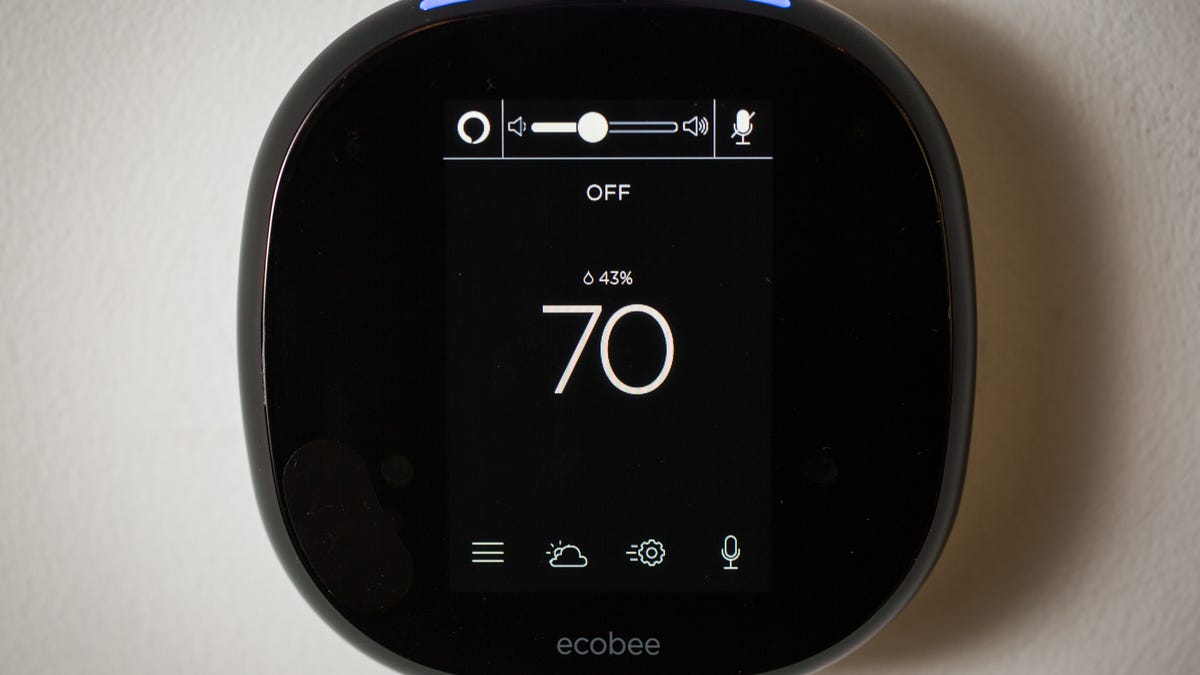Ecobee looks to save you money with new Peak Relief feature
The smart-thermostat maker pilots a program that automatically tweaks your temperature as energy rates change.

The Ecobee4 smart thermostat.
If you're looking to wring out even more energy savings from your smart thermostat, Ecobee has a new feature you may want to try.
The company told CNET it's piloting a feature called Peak Relief, which allows customers to cut down automatically on their heating and cooling use when energy rates are higher and use more when rates are lower. Ecobee says the new feature could help customers save up to 10 percent on their heating and cooling bills, in addition to the up to 23 percent Ecobee thermostats already save (amounting to a total of 33 percent).
Peak Relief officially rolled out Monday to select Ecobee thermostat customers in California, Arizona and Ontario, Canada, but is only available to people using time-of-use utility rates. Additionally, you'll need an electric heating or cooling system for Peak Relief to work. It will be available more broadly early next year.
The new program is part of Ecobee's mission to help customers conserve energy and save money using its smart thermostats, light switches and room sensors. Adding more features like Peak Relief to its existing thermostats could help the Toronto company win more customers from the leader in smart thermostats, Nest, which is owned by Alphabet.
So, how does Peak Relief work? Let's say you set your thermostat temperature to cool at 74 degrees. With Peak Relief, the thermostat will automatically cool your home to 71 or 72 degrees when rates are lower, then allow the temperature to slowly go back up to 74 when rates increase.
The feature offers two preferences, so your thermostat will either focus more on comfort and stay closer to your temperature settings or focus more on savings and veer a little further away from those settings when rates change.
CEO and co-founder Stuart Lombard likened Peak Relief to a much cheaper version of the Tesla Powerwall, a battery that stores up energy from residential solar panels so it can be used at night.
"Your home is a battery already; it's a thermal battery," he said.
Lombard said Ecobee developed the feature over a year and a half and the program works by using artificial intelligence software, as well as indoor and outdoor temperature readings, to be able to customize Peak Relief settings for each home.
More utilities are adopting time-of-use rates, which charge customers different prices depending on the time of day. Like Uber's surge pricing, higher rates hit during higher demand periods. Standard, also known as tiered, rates charge you a flat rate that goes up when you use more energy.
Time-of-use has the potential to save customers money and help utilities avoid spikes in demand. But, many customers have a hard time keeping track of varying time-of-use rates, resulting in less energy savings for utilities and potentially higher costs for customers. Peak Relief may be able to alleviate that problem.
"We can take a lot of that workload off customers by doing it automatically for them," he said.
Tech Enabled: CNET chronicles tech's role in providing new kinds of accessibility.
Blockchain Decoded: CNET looks at the tech powering bitcoin -- and soon, too, a myriad of services that will change your life.

